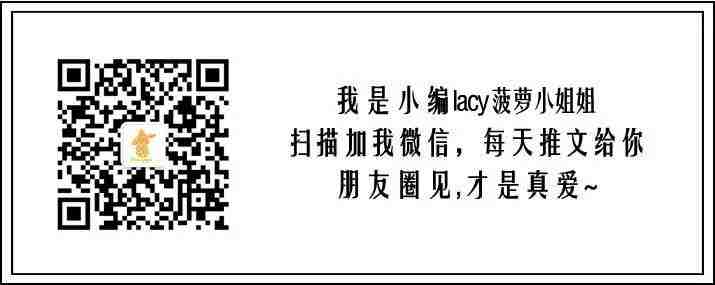艺术是发起挑衅,设计是缓解摩擦



来源:尖荷|jianhexingdong|责任编辑:徐园园|选稿:胡sir

▒ 设计不是艺术
Design is not art
设计与艺术有着许多相似之处,共享着很多相同的元素;虽然是这样,但是它们在根本上是两门不同的学科。它们的功能不同、目标不同、内容来源以及实现方式也不相同。而设计与艺术最大的区别则体现在艺术可以很个性,设计却不能。设计的决策不能单纯的基于直觉、意见或者自我。
(原文:While design and art do share many overlapping qualities, they are two fundamentally different disciplines. They are informed through two different sets of data, they are created through two different processes, and they perform two different functions. More than anything, these distinctions demonstrate that design decisions cannot be based purely on intuition, opinion, or ego. Humble design is good design.)
在开始之前我想澄清一点,我曾特别指出的 “设计不是创造性的表达” 这句话中,所强调的词是“表达”。也就是说,设计不是艺术。他们之间的区别在于创意在设计与艺术中所扮演的角色。但是许多设计师却未能看到这一点,也正是这种混乱的认知,让许多人将设计与艺术混为一谈。
(原文:But before I do that, I want to point out that I specifically said that design is not about creative expression, with the key word being expression. That is to say, design is not art. That does not mean, however, that art has a monopoly on creativity. Rather, the distinction lies within the role that creativity plays in design and art. At the same time, however, many designers fail to see this distinction. Conveniently, this very behavior points directly to the core of the design vs. art issue: a lack of understanding for the differing origins, processes, and purposes that design and art serve.)
……
▒ 本质的区别
Fundamental Differences
尽管艺术与设计界限模糊,但是它们之间有着巨大的差距。我们通过以下几点进行快速的、关键的比较:
(原文:Despite the common misconception that design and art are one in the same, there are actually colossal gaps between the two disciplines and they can all be very easily identified through a quick, critical comparison of both practices. We can break down the foremost differences as follows:)


不同的目标
Different Purposes
艺术是个人的表达,因此它具有内在和独立的价值,艺术本身的目的和价值是完全包含在艺术本身之内的。而设计却不是这样,设计的关键在于使用,它的价值取决于外部因素,即这个设计所要解决的问题和面对的使用人群。也就是说设计是一种情景模式,设计的价值取决于设计的使用。(译者编:有点绕,意思就是一个设计如果没人用,不是为用户设计的,就不是设计。)
原文:Art is about personal expression. As such, it has intrinsic and independent value. The purpose and value of art is fully contained within the art itself. This is not the case with design. Design is about use. It’s value is dependent on external factors, namely the purpose that it serves and the user that it serves that purpose for. In this sense, design is contextual and it’s value depends on the context of it’s use.)


(上图为Alan Fearnley 汽车主题油画,属于艺术品,汽车只是画面的主题;下图为汽车概念设计,着重于体现汽车的外形、材质、以及用户体验等)
……
艺术是一种挑衅,它让你思考。
为了挑战规则而去挑战规则。它触发了情感,产生了争议,同时彰显了艺术家的身份个性。它会产生一种摩擦,出于好的或者是坏的目的。
设计则是缓解摩擦,它为你提供了思考的机会,帮助你更简单更轻松地解决问题。设计从来不会挑起争端,它是中立性质的,功能的中立性。设计勇于面对和解决人们所遇到的问题与挑战,让人们更高效的解决它们。
(原文:Art is about provocation. It makes you think. It challenges norms for the sake of challenging norms. It sparks emotion, creates controversy, and expresses identity. It generates friction, for better or worse. Design is about alleviation. It offers you the opportunity to think less. It is completely ambiguous in that it never creates controversy; it merely performs it’s impartial function. It addresses existing challenges, improves efficiency, and serves utility. It reduces friction, for better or worse.)


(上图桌面雕塑摆件,仅起装饰作用;下图办公桌收纳设计,着重于解决与办公桌小物品的收纳问题)
……
艺术是探索性的,
它将自己置入到危险的深渊中,艺术家大胆的探索新的艺术题材与风格,或者是艺术信念,异想天开,有时让人捉摸不透。
设计则基于对生活的观察与推敲,在于不断地对解决方案的验证及改善。设计会以现有的模式为基础进行选择性的创新。
(原文:Art is about exploration. It leaps into the abyss, blindly and courageously exploring new subject matter, artistic styles, and statements. It is whimsical. Design is about observation and iteration. It observes solutions that have worked well in the past and incrementally improves them. It reapplies and repurposes tried-and-true inventions. It builds upon itself with selective innovations. It is calculated.)
艺术是让人欣赏的,艺术品可以被人们欣赏、思考或者蔑视。一个好的艺术作品是来自于艺术家内心深处的艺术,是艺术家的自身的反映。设计是功能性的,它帮助人们解决相关的问题,帮助人们完成目标与任务。一个好的设计来自于设计师对用户深刻的观察与理解,它可以反映出使用者对现实的需求。
(原文:Art is about appreciation. It gives the viewer something to admire, ponder, or despise. The best art is that which comes from deep within the artist; it is a reflection of it’s creator. Design is about function. It aids the user in completing a task or navigating a system. The best design is that which comes from a deep understanding of the user; it is a reflection of it’s audience.)

(毕加索《格尔尼卡》画面表现的是1937年德国空军疯狂轰炸西班牙小城格尔尼卡的情景)

(公共卫生间标识设计,向使用者传达男/女卫生间的信息)
小结:
艺术是关于艺术家的,设计师关于用户的。


不同的资料来源
Different Data Sources
艺术是一种自我表达的方式,所以艺术的内容来源完全取决于艺术家自身。作为一名艺术家,你的内容、数据以及灵感的来源可以是你自己(可以说成内在的)。而设计师关乎于使用,所以其内容源自于产品目标及其所服务的对象,作为一名设计师,你的设计内容必须来自多个不同的领域,这些来源都是外在的。
(原文:Because art is a form of personal expression, it can come solely from the artist. As an artist, your sole source of data and inspiration can be yourself. Your own personal expression. However, because design is about use, it must be derived from the purpose that it serves and the user that it serves that purpose for. As a designer, your work must be informed by multiple sources of data, which are almost always outside of yourself.)

(主题插图)

(科研论文配图)
虽然设计会被认为是一种主观上的行为,但现实中随着我们对于设计的目标、内容来源及实现方式的理解的日益成熟,设计实践已经变得越来越客观。通常情况下,当设计以产品的形式提供到目标用户手中,我们便可以通过一系列的客观指标来判断设计的成功与否。而对于艺术来说,这种逻辑并不成立,艺术永远是主观行为,一件艺术品,有人喜欢它,还有人会不喜欢它。
(原文:As the processes and data sources that we use to inform our designs continue to mature, the practice of design is becoming increasingly more objective, despite the fact that it has been classically regarded as subjective. When a design is introduced to users, we can measure it’s performance and objectively conclude whether or not it’s a good design. This is not the case with art, as one observer may love a piece of art while another may despise it. Art always has and always will be subjective.)

(书籍装帧设计)
小结:
艺术是主观的,设计是客观的。


创意所扮演的的不同角色
Different Roles of Creativity
创意在设计与艺术当中都扮演着重要的角色。好的设计不是单纯为了创意而创意,它只是解决问题、实现目标的手段。另一方面,艺术则可以为了追求创意而创意,因为独特性就是它的价值之一。设计师们不该因为方案本身的创意性和独特性而感到骄傲;真正值得骄傲的是你的创意能够帮助人们更好的解决问题。而艺术家们则完全有权利因为作品所体现出的独特创意而感到自豪。
(原文:Creativity plays significantly different roles in design and art. Good design is not creative simply for the sake of being creative. It is creative for the sake of serving a purpose or solving a problem. Art, on the other hand, can be creative simply for the sake of being creative, because that is precisely the value that it provides. Designers shouldn’t be proud of a design just because it is creative or different. They should be proud of it because, through creativity, they were able to build a design that better solves a problem or serves a purpose. Artists, however, are fully within their right to be proud of a piece of art simply because it is creative or different. This is because that is precisely the value that art provides. It exists within itself.)
这里我举个例子,有这样一台车,没有车门。人们不会去赞美与欣赏这种创意,虽然没有车门的车勇于打破常规。一辆车如果没有门,人们便无法进去使用它,那么作为设计,这辆车的存在也就毫无意义。转念一想,它可以成为一件艺术品,因为艺术品的打破常规经常被人称赞。
(原文:Let’s return to the super car analogy that I used in the podcast episode. Nobody would ever praise a car that has no doors simply because it’s creative and breaks convention. Cars have a purpose, and without doors, drivers can’t get into them and cars thus can’t serve their purpose. At the same time, art is regularly praised simply for being creative and breaking convention. Because that’s it’s purpose.)

小结:
艺术为了创意而创意,设计通过创意解决问题。

▒ 有时,他们的界限很模糊
Sometimes, the Lines Blur
当然了,设计与艺术之间还存在着一些例外。譬如,在很多方面,艺术家依赖他们的观众以获取认同,或是哪怕仅仅出于作品售卖方面的考虑。尤其是对于那些接受了预订委托的艺术家们来说,这方面的表现就显得特别真实。在某些情况下,艺术家们还需要专门针对特定受众的体验需求而进行创作,这时你甚至可以说他们其实是在面向受众进行设计。甚至于艺术会有一种预期,这种艺术品就会围绕着受众一方,而不再局限于艺术家本人。
(原文:Granted, there are exceptions to the rules that I’ve just laid out. In many ways, artists do depend on their audience, whether it be for approval, critical praise, or even sales. This is especially true when artists are commissioned for predetermined work. In some cases, artists may create art that is supposed to give the viewer an experience; an experience that you could almost say was designed for the viewer. It may even have an intended outcome or reaction. In this sense, the art is indeed more about the audience (or users) than the artist.)
同时,设计可以是个人和艺术。设计师为自己的设计注入了自己的经验和创造力,就像艺术家一样。许多设计师都运用视觉造型的一种方式,不仅提高了设计的功能的能力,但也提供了一个有吸引力的和美观的经验。我们不需要去寻找能找到艺术灵感的元素的美丽的设计。所以美学无疑在设计中扮演一个角色。
(原文:At the same time, design can be personal and artistic. Designers inject their own experience and creativity into their designs, much like artists do. Many designers have the ability to apply visual styling in a way that not only enhances a design’s functionality, but also provides an attractive and aesthetically pleasing experience. We don’t have to look far to find beautiful designs that contain elements of artistic inspiration. So aesthetics undoubtedly do play a role in design.)
……
▒ 审美的重要性
The Important Role of Aesthetics
当我们从审美的角度来思考设计与艺术时,我们就会发现他们在很多时候又是相互交融着的。在现实中我们如何去分辨一件事物究竟是艺术品还是设计产品,我们需要从三个方面来区分他们;同时,审美因素又会造成两者的模糊认识,所以我们可以在审美、美学因素上对设计产品进行判断:
(原文When we start to think of things this way, it would almost seem as if design and art both contain elements of each other. And I would, without hesitation, say that they do. But in determining whether something is a product of design or a work of art, we need to first look at the process through which it was created. It is the process (and namely the 3 fundamental differences that I mentioned earlier) that set design and art apart. Since aesthetics are most commonly used to show where design and art can overlap, let’s take a look the roles that aesthetics play in design specifically. We can break this down like a math equation:)
你会发现在设计中,美学完全依赖于功能而存在。虽然在某种意义美学可以提高设计品格,但也不是不可或缺的,功能性才是一个设计的成功所在。同样,美学必须源于设计的功能,一个仅仅具有美的外观而毫无功能的设计师不允许存在的。
(原文:You’ll notice that in design, aesthetics are entirely dependent on function. And while aesthetics can enhance a design, they are not essential to it’s success in the same way that function is. Similarly, aesthetics must be derived from the function of the design, else the design may run the risk of being attractive but not functional (and thus providing no real value). This paradigm doesn’t quite exist in art.)
……
设计意味着谦逊。
抱着谦逊的态度,接纳
“设计是客观的,是关于产品和用户的”这一事实,你会发现很多时候我们从自我认知出发所进行的假设与判断其实都是站不住脚的。无论你是怎样高级别的设计专家,你自身都无法代表产品所面向的目标用户群体。我在自己的 设计思想总结 当中提到过,谦虚是用户体验设计师最应具备的品质之一,而本文便可以作为这一点的补充说明。作为一名谦逊的设计师,我们应当认识到:
(正文:If anything, design should be humbling. When practiced correctly, it will almost always show us that our assumptions, while generally well-founded, are usually wrong. Regardless of how much of an expert you may think you are, you simply can’t represent the collective mass that is a user base. In my personal design philosophy, I mention that humility is the most important quality that a UX Designer can possess. This article (and the understanding that design is not art) should serve to reinforce that sentiment. As a humble designer, one should recognize the following:)
1.设计师所设计的产品,在多数时候旨在服务于设计师自身以外的目标。设计是关于用户的,而非设计师本人。
(Designers create products that are intended to serve purposes that exist outside of themselves. The design is about the user, not the designer.)
2.为了创造出能够有效服务于主旨目标的产品,设计师必须从外部获取相关信息,以理解目标、探索并验证方案;盲目的突出自我,于内在挖掘解决方案,最终将会南辕北辙。设计是一种解决问题的能力,而非展现内在创意的技法。
(In order to create a product that properly serves it’s purpose, the design must be adequately informed by outside data. Designers don’t magically create masterpieces; they collect and interpret information that empowers them to create masterpieces. Design is not a talent; it’s a skill.)
3 设计师必须以合理的方式运用创意,使解决方案能够更好的服务于产品目标。设计必须有明确的意图,每一个设计决策背后都要有足够坚实的理由作为支撑。
(Designers must leverage creativity in a thoughtful way, so that the design can better serve it’s purpose. The design should be built with intent; there should be reason and justification behind the decisions made.)


关于设计和艺术你怎么看?欢迎留言给大家分享。
现在是优品时间↓戳


欢迎入驻EEUD设计师平台
后台菜单设计师汇数千设计师在等你
年轻设计师可以↓
❶承接平台发包的设计项目❷学习提升设计能力❸拓展圈内人脉资源❹素材案例教程
资深设计师可以↓
❶设计师及作品包装推广❷效果图施工图出图中心❸综合设计施工资质❹财务法务税务❺提供办公空间挂牌与分时租赁❻施工主材软装
↓↓↓点击下方「阅读原文」一键入驻平台
阅读原文 最新评论
推荐文章
作者最新文章
你可能感兴趣的文章
Copyright Disclaimer: The copyright of contents (including texts, images, videos and audios) posted above belong to the User who shared or the third-party website which the User shared from. If you found your copyright have been infringed, please send a DMCA takedown notice to [email protected]. For more detail of the source, please click on the button "Read Original Post" below. For other communications, please send to [email protected].
版权声明:以上内容为用户推荐收藏至CareerEngine平台,其内容(含文字、图片、视频、音频等)及知识版权均属用户或用户转发自的第三方网站,如涉嫌侵权,请通知[email protected]进行信息删除。如需查看信息来源,请点击“查看原文”。如需洽谈其它事宜,请联系[email protected]。
版权声明:以上内容为用户推荐收藏至CareerEngine平台,其内容(含文字、图片、视频、音频等)及知识版权均属用户或用户转发自的第三方网站,如涉嫌侵权,请通知[email protected]进行信息删除。如需查看信息来源,请点击“查看原文”。如需洽谈其它事宜,请联系[email protected]。